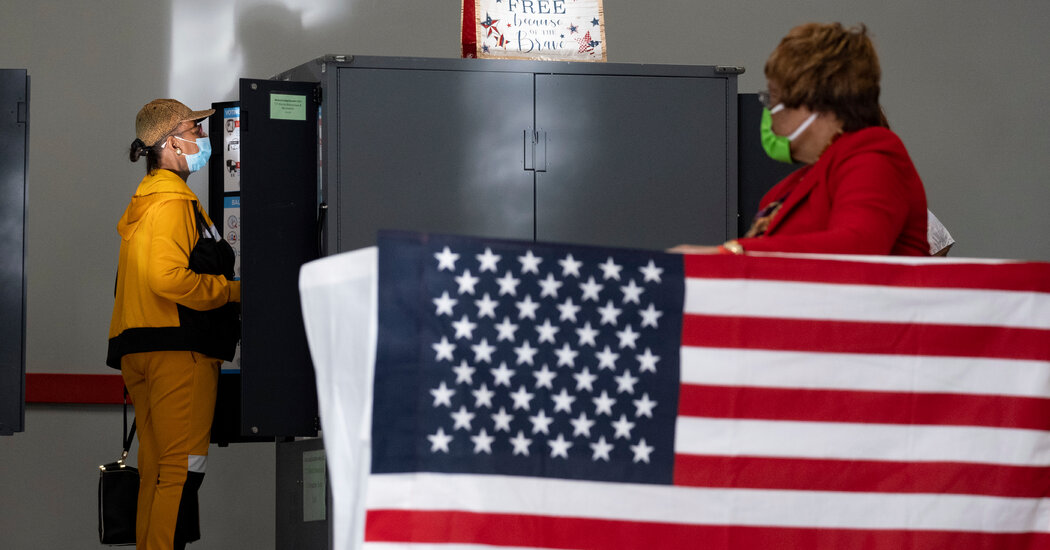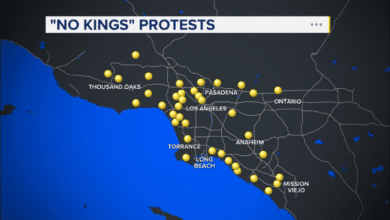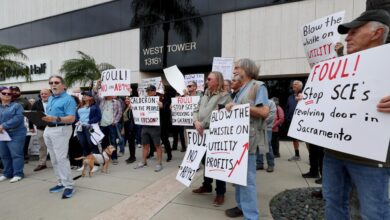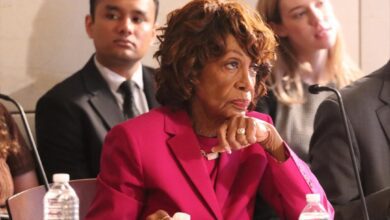A Legal Battle Over Political Maps in Alabama, Georgia and Louisiana

The Republican-led legislatures of Georgia, Louisiana and Alabama find themselves backed against courtroom walls this month in strikingly similar circumstances, defending congressional maps that federal judges have said appear to discriminate against Black voters.
It is a familiar position. Last year, the same judges said that, even before full trials were held, the same maps were so likely illegal that replacements should be used for the 2022 elections. That did not happen: Thanks to a once-obscure Supreme Court rule that outlaws election-law changes close to campaign season, the disputed maps were used anyway.
With an electorate so deeply split along partisan lines that few House races are competitive, the significance last November was glaring. Republicans took control of the House of Representatives by a bare five seats, three of them from districts they were poised to lose had new maps been used in the three states.
Now the revived litigation is again churning through the courts — at least six of them, at last count — with the same political stakes and a sharply divided view of the likely outcomes.
Each of the cases asks the same question: whether the Republican-dominated legislatures drew maps that effectively boxed Black voters out of having a chance of electing a candidate in one additional congressional district. The 1965 Voting Rights Act bars maps that have that effect.
Many redistricting experts say they believe the cases against the states are so strong that the states are left to pursue a hail-Mary legal strategy, hoping that delays and repeated appeals will maintain the status quo as they did in 2022.
“Republicans in these three states are trying to run out the clock as long as they can to use invalidated maps” in 2024, said Jeffrey Wice, a senior fellow at the Census and Redistricting Institute at New York Law School.
Some lawyers for the states, who did not want to speak publicly while litigation is pending, take issue with that interpretation. And one veteran litigator for Republicans in voting rights cases, Michael A. Carvin, said their arguments are stronger than their opponents think.
Mr. Carvin, who successfully argued a major Voting Rights Act case before the Supreme Court in 2021, said he believed the states’ opponents were seeking “a dramatic change in the current redistricting plans” that higher courts were unlikely to support.
“I think all the defendants have an excellent chance of prevailing,” he said.
At first blush, there is ample reason to think that the legislatures have a losing hand. One reason the Supreme Court held up the drawing of new maps last year was to await the outcome of a major challenge to the Voting Rights Act’s rules for judging bias in political maps, brought by Alabama. Alabama lost in June, when the court reaffirmed those rules by a 5-to-4 vote.
Since then, Alabama has mounted what amounts to a scorched-earth defense of its maps, despite telling a three-judge panel that the state needed a new House map by October, before an early November filing deadline for candidates in congressional primary elections.
After the Supreme Court decision in June, the federal panel resurrected its 2022 order that the state draw a new House map that gave Black voters a significant chance of winning two of the state’s seven congressional districts, instead of one, in a state that is 26 percent Black. The Legislature first asked for extra time, then produced a map last month that again limited Black voters’ clout to a single House district.
And when the federal judges rejected that map this month and handed its redrafting to an outside expert, the state again asked the Supreme Court to intervene, arguing that the three judges’ map-drawing order had exceeded the bounds of the Voting Rights Act.
The judges’ response, issued last Monday, was withering. They pronounced themselves “deeply troubled” by the state’s failure to draw a usable map, and “disturbed” by the resulting waste of time.
“The law requires the creation of an additional district that affords Black Alabamians, like everyone else, a fair and reasonable opportunity to elect candidates of their choice,” they wrote. “Without further delay.”
Some experts say they see similar tactics in Louisiana, where Black residents make up 31 percent of the state population but five of six of the state’s representatives in the House are white. A federal district judge ruled last year that the State Legislature’s map very likely violated the Voting Rights Act and ordered a new one drawn for the 2022 elections. The Supreme Court blocked that order, but lifted its stay after its June ruling in the Alabama case.
Since then, the judge in Louisiana has rejected efforts by the state’s lawyers to put off drafting that replacement map, prompting the lawyers to ask a federal appeals court to allow a delay. The lawyers say there is “just enough time” to hold a trial first to determine whether the existing map is in fact illegal; the plaintiffs, including Black voters and the state chapter of the N.A.A.C.P., call it a delaying tactic.
“Their strategy has consistently been to slow-walk this case, only to later announce that the time for entering relief has run out,” they wrote in a court filing last month.
A lawyer for the plaintiffs in the Georgia, Louisiana and Alabama cases, Abha Khanna, said she thought the judges in those cases had made their impatience clear. She said that they had signaled that if there is relief to be had for Black voters in these states under the Voting Rights Act, “it should be in time for the 2024 elections.”
Those defending the maps say that the current jockeying is a diversion from a bigger question: whether the states’ arguments for their maps are in fact persuasive. The arguments, like the cases themselves, are complex, but many of them boil down to a single assertion, that judges who have ordered new maps are using a too-broad interpretation of what makes maps illegal under the Voting Rights Act.
In both Alabama and Louisiana, for example, the states’ lawyers argue that judges are ordering the states to create precisely the sorts of racial gerrymanders that the Voting Rights Act forbids — except that in these cases, the gerrymanders favor African Americans.
In Louisiana, they argue, the judge is creating an additional district that could elect a Black representative by knitting together African American communities that are separated by a hundred miles or more. In Alabama, lawyers contend that federal judges are commanding above all else that the state create two congressional districts that give Black voters a voice — something they say defies the law’s decree that race cannot be the dominant factor in redrawing political maps.
Both states also contend that the Supreme Court ruling in June that said affirmative action programs at Harvard and the University of North Carolina discriminated on the basis of race should also apply to race-based redistricting cases.
Many see that as a bid to win over Supreme Court Justice Brett M. Kavanaugh. He provided the fifth vote that same month to uphold the Voting Rights Act, but suggested that his mind remained open to other arguments against it.
The question of how much race can figure in redistricting cases has been litigated for decades, and the states’ critics say the law is not just clear, but newly upheld by a conservative Supreme Court. In the past year, Alabama has challenged it four times — and lost every time.
Mr. Carvin nevertheless said the law, and the Supreme Court’s ruling in June that upheld it, are not as settled as some think.
“The courts have made crystal clear that there’s no obligation to create majority-minority districts” — districts with a majority of Black voters — “or districts that will elect minority candidates,” he said. “It’s equal opportunity, not equal results.”
Sheelagh McNeill contributed research.




